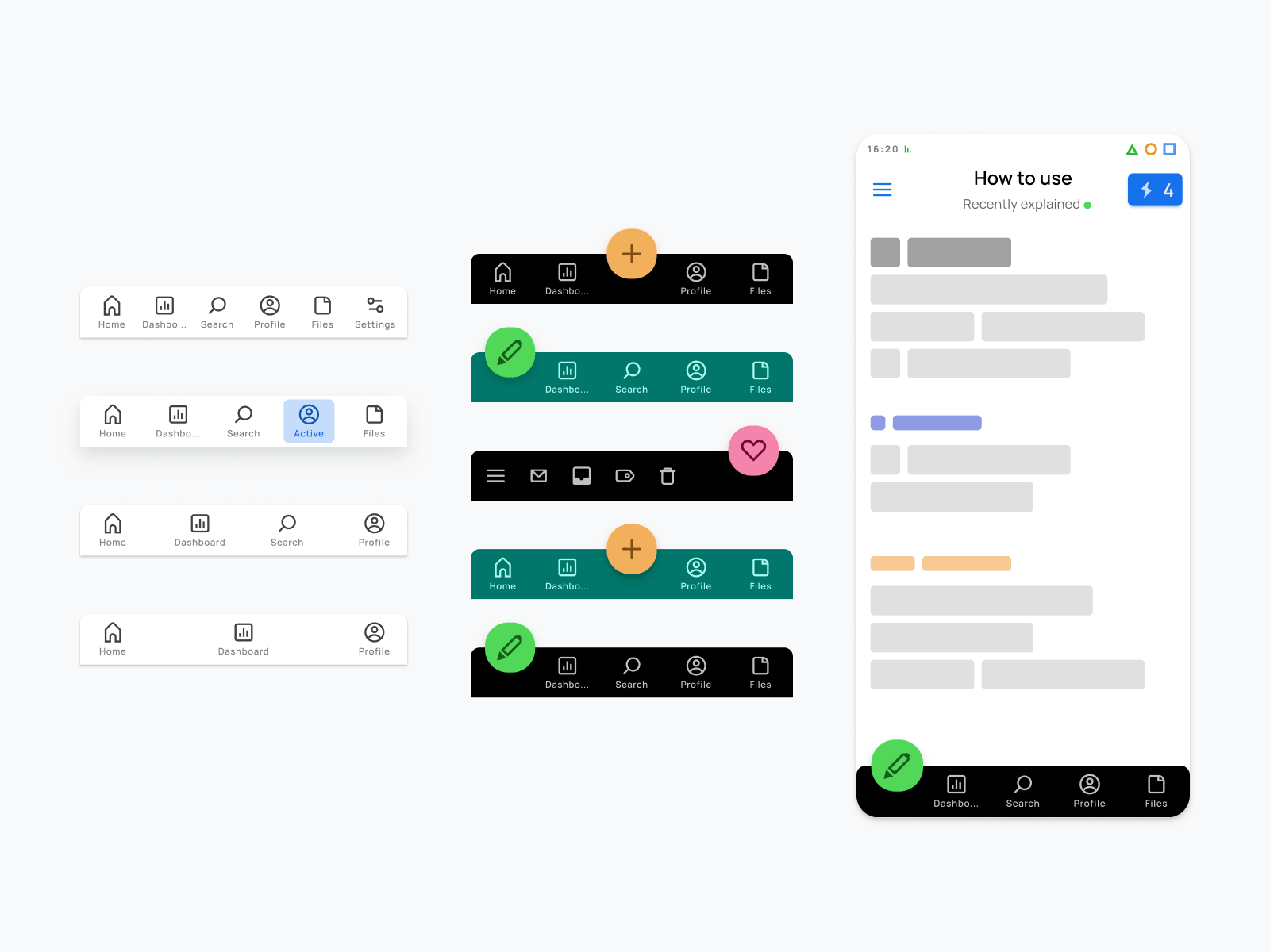Table Of Content

It takes various kinds of information from the user in multiple steps, making it easy to provide the necessary details. One of the most effective tools for organizing content and enhancing user experience in web design is using tabs. In Storyline 360, it’s easy to assign different states to the objects on your screen, like tabs, buttons, characters, text—pretty much anything. When you think about the types of interactions most often used in e-learning, the good old tabs interaction is probably on the top of your list. Each of these, however, executes an excellent color transition hover effect. The color schemes with green and white also make the whole design pop up more.
Tabs Widget. No JS!
Users can click on tabs to switch between them and see different information or options. Tabs keep things organized, and make it easier to find what you’re looking for. So, instead of having to look all over the place for something, you can just click on the right tab and find it quickly. Using a Dot indicator can be helpful to show that tab has a new piece of information. Also, you can display a counter indicator that represents the number of new items within the tab. If you are using tabs to group a set of properties that the user can define, use an indicator to show the state of the tab as In Progress / Unsaved and Done / Saved.
Golden Colorado Bachelor Pad

In the ‘Personal Information’ tab, the user is asked to enter personal information such as name, date of birth, etc. When the ‘Bank Information’ tab is opened, bank information is asked from the user. As the tab titles suggest, personal information such as name and phone number are collected in the first tab, the second tab takes booking information from the user. In contrast, the third tab shows the entered details and the price and it asks the user to CONFIRM.
Best tablets for graphic design in 2024 - Pocket-lint
Best tablets for graphic design in 2024.
Posted: Sat, 23 Mar 2024 07:00:00 GMT [source]
Animated CSS Tabs
And the ‘Confirm Details’ tab asks the user to confirm the entered details. The structure is very convenient, ensuring every user gets the most out of it. We ensured each comes with a user-friendly code, complete responsiveness, and regular updates. Since there weren’t any truly reliable solutions we could reuse multiple times, we decided to create our snippets.
After graduating with BA he self-taught front-end web development. Currently has over 10 years of experience in mainly CSS, HTML (TailwindCSS, Bootstrap), JavaScript(React, Vue, Angular), and PHP. Obsessed with application performance, user experience, and simplicity. Appropriate icons and meaningful headings have been used for the tabs to understand what each tab contains. The ‘Personal Info’ tab will ask the user to enter personal details such as name, email address, phone number, etc. The headings of the tabs reflect the categories of required inputs.
#7 Animated Color Changing Tabs
This form is fully customizable like any other form mentioned in this blog post. You can change this title to something more appropriate for you. The third tab allows the user to confirm the entered details. The first tab collects personal information such as name, phone number, and email. For example, anyone can EASILY understand just by looking at the tab heading and the icon of the ‘Personal’ tab that personal information has to be entered in this tab.
Pure CSS Tab Module
Google Drive declutters its home tab in latest redesign for Android - Android Police
Google Drive declutters its home tab in latest redesign for Android.
Posted: Mon, 13 Nov 2023 08:00:00 GMT [source]
It relies on HTML, CSS, and JS code structure to get a smooth-running interface. While the demo showcases only 2 tabs with options inside, the structure is flexible enough for you to add more. Sliding into view, left and right, according to the switch, this tab is a fantastic way to add that animated element to your site. A pretty straightforward design to get started with, you can replicate the whole structure onto your site with ease.
Best Practices for Using Tabs
In this case, it is fruits, but you can replace it with anything you like. The top of the tabs is also differentiated using different color schemes. Because all of the other sections are monochrome and depict more of a professional and neat look. Using simple CSS, the tabs also execute a hover effect, transitioning the color scheme to a darker color.

Select the Tab labels, and in the Style tab, select the Centered Pills option. For button color, we’re selecting Transparent, and for text color, we’ll select a dark gray. Click the Hover State button and change it to “Hovered State”. Visual cues like changing the tab’s color or applying a border can help users easily identify which tab is currently active. They say the devil is in the details, and that certainly holds true for designing interactive e-learning. It’s exciting to think about all the little considerations that go into making even something as unassuming as a tabs interaction more beautiful and intuitive.
Using simple CSS, various animations and transitions are implemented throughout. These are fully responsive and easily adjusted according to the device screens. A further benefit to using tabs is they help keep the user interface free of clutter. Therefore, if all the contents from these distinct sections were combined on one page, the user interface would be flooded.
Bootstrap tabs by Boomer is a pretty advanced example of Bootstrap tabs. If you like this form wizard, you can use it on your website. This wizard provides three Bootstrap tabs with the headings ‘About’, ‘Account’, and ‘Address’. Each tab collects a particular type of information from the user.
Another additional detail here is also the responsiveness it features. Automatically adjusting to any device screen size does not affect your site’s responsiveness. Tabbed navigation is a popular way of organizing content in user interfaces (UI). The design pattern presents users with a set of tabs, each representing a different category of content or functionality. It’s similar to how tabs are used in a book to mark different sections, except tabbed navigation is used on a website or computer application. If you want something more sophisticated and out of the box, this vertical CSS tab design is just for you.
When you switch between tabs, it uses a fade/flash to change the text, very slick. Nested tabs enable you to create custom structures, using any of Elementors highly configurable widgets. In this step, we will add the HTML code to create the basic structure of the project. So you should avoid this kind of complexity but in some cases, using nested tabs is simply the best option.

No comments:
Post a Comment